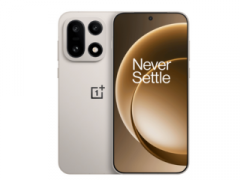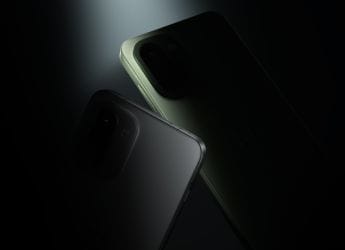- Home
- Ai
- Ai Features
- OpenAI Does It Again: While Google and Meta Play Catch Up, Sora 2 Changes the Game
OpenAI Does It Again: While Google and Meta Play Catch-Up, Sora 2 Changes the Game
The Sora app for iOS is an invite-only app, where users can generate AI videos of themselves and others.

Photo Credit: OpenAI
The Sora app encourages users to generate AI videos of others using the Cameo feature
OpenAI's social media app is taking the Internet by storm. The iOS-only app allows users to generate artificial intelligence (AI) videos of themselves or other users and share them on the platform publicly. It is a twist on the standard vertical, short video content idea, which plays on the popularity of AI-generated content. But OpenAI is not the only one capitalising on this idea. Meta's recently announced Vibe feed on its AI app also explores this idea, encouraging users to create and share AI videos. Google also saw success in socialising AI content with the Gemini-powered “Nano Banana” trends.
OpenAI's Sora 2 Proves They're Leading the AI Content Race
The Sora app appears as a TikTok or Reels clone, but its functionality is entirely around video generation AI models. Once a user adds a video of themselves and verifies their identity, they can then generate AI videos of themselves in any setting using a text prompt. It also comes with a Cameo feature that allows them to take the protagonist of a video, which is usually another user, and create a video of them in a different AI-generated setting.
The capability of using your own likeness in an AI video has become an instant hit among users. Users have been sharing videos of themselves riding a snowmobile, exploring space, diving into the ocean from a cliff, and hanging out with OpenAI CEO Sam Altman on platforms such as Instagram and X (formerly known as Twitter).
But where Sora soared, Meta appears to just be staying afloat. Despite a big announcement and some traction on the platform, there does not seem to be any buzz on the feature. This is likely because while users can generate AI videos, and others can change the picture and music to create their own iteration, the Meta Vibes feed lacks a personalisation element. On the other hand, Instagram's teased video AI feature is yet to arrive.
Google was able to successfully tap into the social media trend using its Nano Banana model, where users can upload an image of themselves and make any changes to it. However, its virality was also limited due to not having a fixed platform to share the content, and the lack of a video element.
Based on the content being shared online and the trending Sora hashtag, for now, OpenAI seems to be leading the AI content race.
Five Things About the Sora App
1. The iOS-only Sora app is currently available on an invite basis. This means that unless one has an invitation from an existing user, they will not be able to generate videos or view what others have created. This appears to be a strategy to keep the compute costs manageable and prevent its servers from being overloaded. However, if more users are unable to access the app soon enough, the platform's popularity could suffer.
2. There is a dark pattern with the Sora app. X user @PaulYacoubian shared a screenshot highlighting that if users try to delete their Sora app account, OpenAI warns them that the same phone number and email address cannot be used to create another account. Additionally, if users have been using the ChatGPT application programming interface (API) with the same account, access to that will also be removed. This appears to be a strategy to disincentivise users from deleting their accounts. To what end, that is not known.
3. According to a TechCrunch report, the Sora app rose to third position in the Top Overall app on the US App Store with 56,000 downloads. And in the first 48 hours of being live, it reportedly climbed to 1,64,000 installs. The download statistic reportedly places Sora ahead of Claude and Copilot, and on par with Grok. While it is still behind Gemini and ChatGPT's iOS apps, this is a big achievement for an invite-only app.
4. The concern around deepfakes has increased significantly with the Sora app. The app lets a user not only create a video of themselves but other users in various AI-generated settings. OpenAI does claim to have added safeguards to mitigate harmful usage of the platform, but users can still use it to spread misinformation. For instance, TechCrunch reported that social media is abuzz with users creating realistic videos of themselves with Altman.
5. Copyright infringement is another issue that can soon plague the Sora app. Recently, one of the Sora developers posted a video involving Super Mario. Other users have created videos of Pikachu playing the protagonist in different movies. With Warner Bros. Discovery recently filing a lawsuit against Midjourney for generating images in the likeness of its copyrighted characters such as Batman and Superman, how long as OpenAI go before it is hit with a similar copyright lawsuit? Time will tell.
Is Big Tech Stuck in an Innovation Loop?
When it comes to AI, there is an innovation loop pattern. Once a company releases a feature, soon, rivals either implement a similar feature. We saw this when OpenAI first released Deep Research, followed by similar announcements by Google and Perplexity, and the same was observed with features such as web search, image generation, native audio generation, and AI-powered web browsers very recently. This does not even take into consideration the assistant-style implementation, the same old chat interfaces, and similar agentic functionalities.
Currently, AI-powered short videos seem to be the flavour of the month. As we discussed above, major players have started experimenting with social media-style AI videos, and others could soon get on the bandwagon.
The repetition suggests a kind of innovation treadmill. Companies are racing to offer marginal improvements without fundamentally reimagining the technology or offering something truly unique. Once an AI player breaks new ground, others immediately join in the trend with their own take on the capability. This cycle risks turning generative AI into a commoditised service, where differentiation depends less on breakthroughs and more on branding and ecosystems.
Get your daily dose of tech news, reviews, and insights, in under 80 characters on Gadgets 360 Turbo. Connect with fellow tech lovers on our Forum. Follow us on X, Facebook, WhatsApp, Threads and Google News for instant updates. Catch all the action on our YouTube channel.
Related Stories
- Samsung Galaxy Unpacked 2025
- ChatGPT
- Redmi Note 14 Pro+
- iPhone 16
- Apple Vision Pro
- Oneplus 12
- OnePlus Nord CE 3 Lite 5G
- iPhone 13
- Xiaomi 14 Pro
- Oppo Find N3
- Tecno Spark Go (2023)
- Realme V30
- Best Phones Under 25000
- Samsung Galaxy S24 Series
- Cryptocurrency
- iQoo 12
- Samsung Galaxy S24 Ultra
- Giottus
- Samsung Galaxy Z Flip 5
- Apple 'Scary Fast'
- Housefull 5
- GoPro Hero 12 Black Review
- Invincible Season 2
- JioGlass
- HD Ready TV
- Laptop Under 50000
- Smartwatch Under 10000
- Latest Mobile Phones
- Compare Phones
- OPPO Reno 15 Pro
- OPPO Reno 15
- Vivo Y500 Pro
- Realme GT 8 Pro Aston Martin F1 Limited Edition
- Huawei Mate 70 Air
- Moto G57
- Moto G57 Power
- Motorola Edge 70
- MacBook Pro 14-inch (M5, 2025)
- Asus Vivobook S16 (S3607QA)
- iQOO Pad 5e
- OPPO Pad 5
- Noise Diva 2
- Noise Halo 2
- Acerpure Nitro Z Series 100-inch QLED TV
- Samsung 43 Inch LED Ultra HD (4K) Smart TV (UA43UE81AFULXL)
- Asus ROG Ally
- Nintendo Switch Lite
- Haier 1.6 Ton 5 Star Inverter Split AC (HSU19G-MZAID5BN-INV)
- Haier 1.6 Ton 5 Star Inverter Split AC (HSU19G-MZAIM5BN-INV)

















